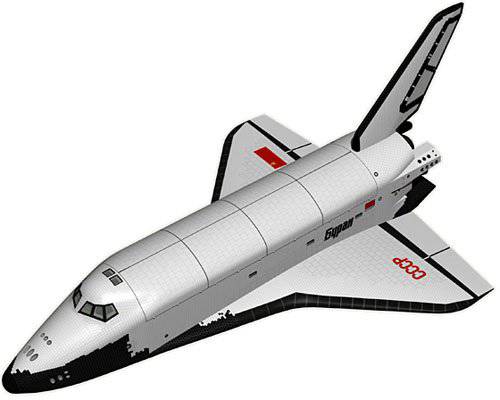The return of reusable spacecraft

Roskosmos placed an order for the development of a preliminary design, which is most likely to be carried out by the Khrunichev Center. The space agency allocates 250 million rubles and allocates two years to the project of a new type of transport.
The lot, put up for tender, is called “reusable space launch system of the first stage” (MRKS-1). The discussion is about the development of a universal returnable first stage with the possibility of use for various spacecraft. The stage will deliver into the reference orbit (200 kilometers) 7 –60 tons of payload. To overcome this distance, most of the fuel and energy of modern launch vehicles goes away. Having reached the reference orbit, the reusable medium should be separated and automatically returned.
After separation, the outputted spacecraft continues on its way further or offline (if the low near-earth orbit is the target), or will fly further using the second and third stages.
The idea of a transport system like the MRX-1 was formulated about 10 years ago. In many ways, a similar project, called “Baikal-Angara”, was presented by the Khrunichev Space Center. The goal of the project is to create a rocket accelerator, which, after separation from the carrier, automatically returns to the home airport. According to the developers, this method of removal will help in solving the problem of pollution of the planet with waste steps, and will also reduce the cost of putting the payload into orbit by 25 – 50%.
In an interview with Izvestia, Anatoly Kuzin, deputy. General Director of "Center Khrunichev", said that the company will participate in the tender.
“We have been conducting this topic for a long time, and over the past few years the project has been developed as a research project,” said Kuzin. - It is necessary to understand that while we are talking about the development of the project, and the creation of the carrier itself will be carried out not earlier than 2020 of the year. Such a system of breeding, in our opinion, is economically justified and promising. We are working to eliminate the shortcomings of reusable spacecraft developed earlier - their high cost of inter-flight service and heavy thermal protection.
According to Ivan Moiseev, the scientific director of the Space Policy Institute, the issue of creating a spacecraft of this type will not become relevant in the coming decades:
- There are no tasks for which this system is needed. Now it makes no sense to make reusable ships, since the start of the project requires too large capital investments, says Moiseyev. - We donated money for research - well, but most likely it will not come to practical creation. A significant amount is needed for an unknown product that may not pay off in the end. American shuttles are a vivid example. They would pay off at the weekly start. In our case, the same problem - because in those. Roscosmos mission is about 20 launches per year.
Vitaly Lopota, General Designer of RSC Energia, believes that the economic component will be decisive in the fate of the project.
- Reusable rockets and ships can be created only if they are cheap. The rocket services of the total cost of the mission amount to 20 – 30%, says Lopota. - Now only promising components of missiles are being made, and not promising carriers. Creating a new rocket is relevant only if we want to fly into space.
The documents for the competition contain the requirement to work out the options for the take-off / landing of the complex from all the cosmodromes at the disposal of Russia: the existing Baikonur, Plesetsk, as well as the designed Vostochny.
Information